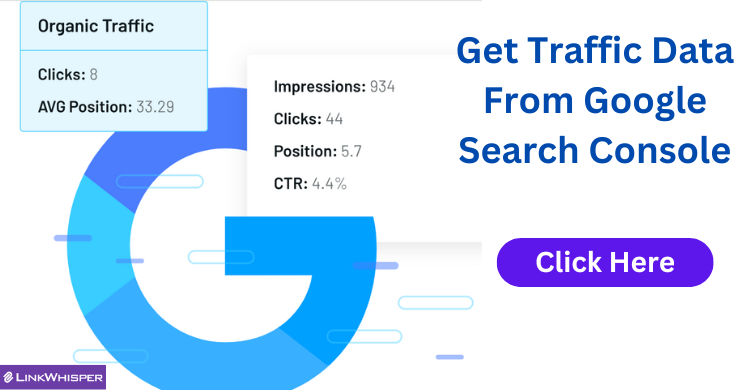Introduction to Content Marketing Tools
The Role of Content Marketing Tools in 2023
In the ever-evolving landscape of digital marketing, content marketing tools have become indispensable for businesses looking to stay competitive. As we step into 2023, these tools are not just about creating content; they are about crafting strategies that resonate with audiences, optimizing for search engines, and measuring the impact of content campaigns. With the right set of tools, marketers can streamline their workflows, gain insights into audience behavior, and ultimately drive more conversions.
Overview of Tool Categories for Content Strategy
Content marketing tools span a wide array of functionalities, each serving a specific purpose in the content strategy ecosystem. These categories include:
- Research and Planning: Tools that assist in uncovering trends, understanding audience needs, and generating topic ideas.
- Creation and Optimization: Software for crafting compelling content, enhancing readability, and ensuring SEO-friendliness.
- Management and Collaboration: Platforms that facilitate project management, document sharing, and team communication.
- Analytics and Performance Tracking: Solutions that provide data on content engagement, user behavior, and overall campaign effectiveness.
Criteria for Selecting the Best Tools
Choosing the best content marketing tools requires a careful evaluation of several criteria:
- Usability: The tool should have an intuitive interface that can be easily adopted by team members with varying levels of expertise.
- Integration: It should seamlessly integrate with other marketing tools and platforms used by the business.
- Scalability: The tool must be able to grow with the business, accommodating increasing demands and complexity.
- Support and Resources: Adequate customer support and learning resources are essential for troubleshooting and maximizing the tool’s potential.
- Cost-effectiveness: The tool should offer a good return on investment, with pricing that aligns with the features and benefits provided.
By carefully considering these factors, businesses can select content marketing tools that not only enhance their content efforts but also contribute to their overall marketing objectives.
html
Keyword Research and Topic Generation
Importance of Keyword Research in Content Marketing
Keyword research is the cornerstone of content marketing. It’s the process of identifying the terms and phrases that your target audience uses when searching for information, products, or services online. By understanding and utilizing these keywords, businesses can craft content that aligns with user intent, improves search engine rankings, and drives organic traffic. Effective keyword research ensures that your content is discoverable and relevant, making it a critical step in any successful content marketing strategy.
Tools for Discovering Trending Topics
Staying ahead of the curve with trending topics is essential for keeping your content fresh and engaging. Tools like BuzzSumo and Google Trends provide insights into what content is currently popular or on the rise. These platforms allow you to analyze top-performing content within your niche and identify patterns in what your audience is interested in. By leveraging these tools, you can generate ideas that resonate with your audience and capitalize on emerging trends.
Integrating Keyword and Topic Research
Combining keyword research with topic generation is a powerful approach to content creation. Start with a broad topic and use tools like Semrush’s Keyword Magic Tool to uncover related keywords and phrases. This integration helps you to not only discover what topics are trending but also how to optimize your content for search engines. By targeting the right keywords within your content, you can improve visibility and engagement, ensuring that your content reaches its intended audience.
“`
Content Creation and Optimization
Enhancing Readability and SEO
Creating content that is both engaging and search engine friendly is a critical aspect of content marketing. Tools like Semrush’s SEO Writing Assistant and Clearscope are designed to help marketers achieve this balance. These tools analyze content in real-time, providing recommendations to improve readability and optimize for target keywords. They assess factors such as sentence length, use of passive voice, and keyword density to ensure that content is accessible to a broad audience while also being structured in a way that search engines can easily understand and rank.
Originality and Plagiarism Checkers
Originality is paramount in content marketing, not only for ethical reasons but also to maintain a strong SEO standing. Plagiarism checkers like Grammarly and Copyscape are essential tools for ensuring that content is unique and free from unintentional duplication. These tools scan the web for potential plagiarism issues, helping content creators to maintain the integrity of their work and avoid the negative consequences of publishing copied or unoriginal content.
Tone Consistency and Brand Voice
Maintaining a consistent tone and brand voice across all content is crucial for building brand recognition and trust with audiences. Tools like Grammarly and Hemingway Editor offer suggestions not only for grammatical correctness but also for tone adjustments. They help ensure that the content aligns with the brand’s voice, whether it’s professional, conversational, or informative. By using these tools, marketers can deliver a consistent message that resonates with their target audience and reinforces brand identity.
Research and Data Analysis Tools
Audience Analysis and Content Performance
Understanding your audience is crucial for creating content that resonates and performs well. Tools like BuzzSumo and Google Analytics provide insights into what content is engaging your audience and how they interact with it. With BuzzSumo, you can analyze the performance of specific content pieces across social networks, while Google Analytics offers deeper insights into user behavior on your website. These tools help you refine your content strategy by identifying topics that interest your audience and the types of content that drive the most engagement.
Competitor Content Benchmarking
Keeping an eye on your competitors’ content can provide valuable insights into content trends and performance benchmarks. Tools like Semrush and Ahrefs offer competitor analysis features that allow you to see which content is working for your competitors and identify gaps in your own content strategy. By analyzing competitors’ keyword strategies and content performance, you can uncover opportunities to create content that stands out and captures more market share.
Transcription Tools for Content Development
Transcription tools are invaluable for content creators who utilize audio or video formats. Rev and Descript are popular transcription services that can convert your podcasts, interviews, and videos into text format. This not only makes your content more accessible but also provides a written record that can be repurposed into blog posts, social media snippets, or even ebooks. By integrating transcription into your content development process, you can maximize the value of your multimedia content and reach a wider audience.
Content Management and Collaboration
Project Management Tools for Content Teams
Effective content marketing hinges on meticulous planning and organization. Project management tools are indispensable for content teams to stay on track and ensure that every piece of content is aligned with the overall strategy. Trello stands out for its user-friendly interface, utilizing boards, lists, and cards to visualize projects and tasks. Its built-in automation tool, Butler, streamlines repetitive tasks, freeing up time for creative endeavors. For more robust needs, Asana offers detailed project tracking and collaboration features, allowing teams to assign tasks, set deadlines, and share documents seamlessly.
Document Sharing and Real-Time Collaboration
Sharing documents and collaborating in real-time are critical for the dynamic environment of content marketing. Google Docs emerges as a powerful ally, enabling multiple users to work on a document simultaneously. Its sharing capabilities eliminate the cumbersome process of emailing documents back and forth, fostering a collaborative atmosphere. With features like automated outlines and version history, Google Docs ensures that content teams can work efficiently and cohesively.
Automation and Workflow Optimization
Automation is transforming content marketing by optimizing workflows and reducing manual labor. Tools like SEMrush offer workflow optimization by integrating various content marketing functions, from SEO analysis to social media scheduling. This not only saves time but also ensures consistency across different marketing channels. Additionally, Zapier can connect your favorite content tools, automating tasks between them and creating a seamless workflow that maximizes productivity.
By leveraging these tools, content teams can enhance collaboration, streamline their processes, and focus on creating high-quality content that resonates with their audience. The right mix of project management, real-time collaboration, and automation tools can significantly boost a content team’s efficiency and effectiveness, ultimately leading to a more successful content marketing strategy.
html
Visual Content Creation Tools
Design Tools for Non-Designers
Not everyone is a trained graphic designer, but in the digital age, everyone needs to create visually appealing content. Tools like Canva and Snappa have emerged as lifesavers for non-designers. These platforms offer user-friendly interfaces and a plethora of templates for social media graphics, presentations, and more. With drag-and-drop functionality, access to a vast library of images, and customizable elements, these tools empower marketers to produce professional-looking designs without the steep learning curve of complex software.
Creating Infographics and Data Visualizations
Infographics and data visualizations are powerful tools for presenting complex information in an easily digestible format. Tools like Venngage and Infogram provide templates and easy-to-use interfaces to help marketers create engaging infographics that can simplify data storytelling. By integrating data with visual elements, these tools enable content creators to enhance their message and facilitate better audience understanding, which is crucial for effective content marketing.
Impact of Visuals on Content Engagement
The inclusion of visuals in content marketing can significantly boost engagement. According to research, content with relevant images gets 94% more views than content without images. Visuals can also lead to higher social sharing, as posts with images produce 650% higher engagement than text-only posts. Tools that aid in creating and optimizing these visuals are therefore indispensable in a marketer’s toolkit. They not only enhance the aesthetic appeal but also play a crucial role in improving the performance and reach of content across various platforms.
“`
Performance Measurement and Analytics
Analytics for Content Marketing Insights
Content marketing is a long-term strategy, often requiring months to see a positive return on investment (ROI). Tracking content performance is essential to determine if your content campaigns are meeting your brand’s Key Performance Indicators (KPIs). Establishing quantitative, relevant, and easy-to-calculate content metrics allows for performance measurement over time and across all levels of the conversion funnel. Utilizing analytics tools for content marketing insights can help identify which content resonates with users, which flounders, and why.
Search Performance and User Behavior
Understanding how users find and interact with your content is crucial for optimizing your content strategy. Analytics tools can provide insights into search performance, such as keyword rankings and share of voice (SoV) in search engine results pages (SERPs). Additionally, user behavior metrics like scroll depth, time on page, and pages per session offer valuable information on how engaged users are with your content. These insights can help refine your content to better meet user needs and improve engagement.
Common Features of Effective Analytics Tools
Effective analytics tools for content marketing should include a range of features to provide comprehensive insights. These include:
- Integration with multiple data sources: The ability to pull data from various platforms such as social media, email campaigns, and website analytics.
- Real-time data analysis: Offering up-to-date insights to make timely decisions.
- User-friendly dashboards: Presenting data in an accessible and understandable format.
- Customizable reports: Allowing users to focus on specific KPIs and metrics that matter most to their business.
- Predictive analytics: Using historical data to forecast future trends and user behavior.
By leveraging these features, content marketers can gain a deeper understanding of their content’s performance, optimize their strategies, and ultimately drive better business outcomes.







